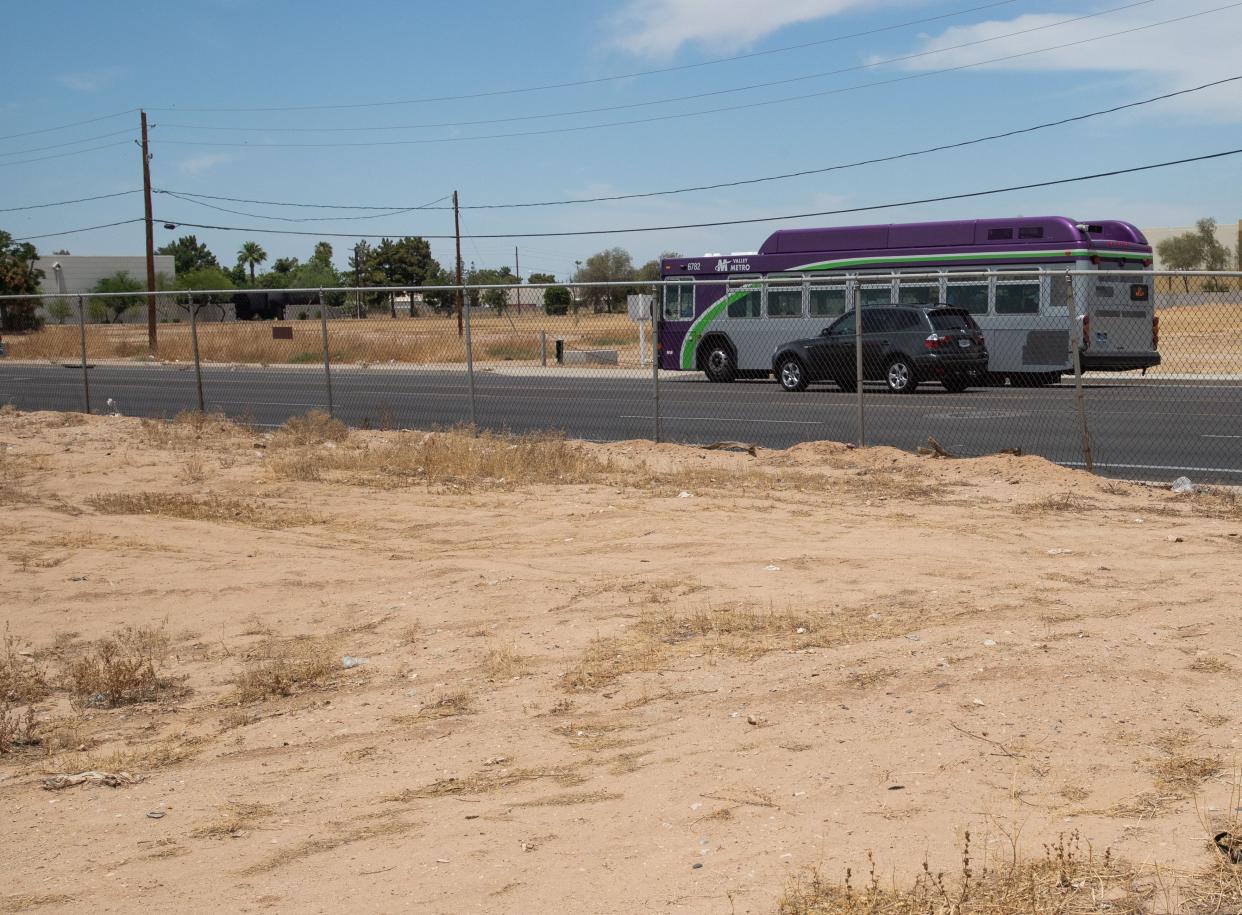'It's collapsing on them': Few options for south Phoenix renters as prices surge

Rents in south Phoenix have risen by an average of 57% in the last five years, leaving many renters scrambling for an affordable unit or face being pushed out of the neighborhood.
In south Phoenix, where the median income is about $38,000 a year, rents climbed to more than $2,000 on average in its 85041 ZIP code in 2021, according to real-estate firm Zillow. That’s up from $1,229 in 2017. Residents in south Phoenix use two-thirds of their income on average on rent and transportation, according to the Chicago-based Center for Neighborhood Technology.
In the neighborhood's 85040 ZIP code, median rents went from $1,156 in 2017 to $1,747 in 2021 and from $1,170 to $1,751 in the same time period in its 85042 ZIP code.
The pandemic potentially turning a corner may only signal more challenges for low-income families as pandemic-era assistance programs expire and landlords take advantage of the Valley's hot rental market. This leaves low-income renters with even more of a cost burden when they are forced to move.
“What we’re seeing is notice of rent increases but also non-renewal of leases where landlords may want to take time to refurbish the property and rent it to a higher income,” said Pam Bridge, director of advocacy and litigation for Community Legal Services. “And moving is so expensive. It’s devastating for families.”
Years of little change
Phoenix had one of the highest eviction rates in the country before the pandemic, according to a study by the city. The study also found the city had a shortfall of 163,067 units, meaning there aren't enough housing units to accommodate the city's population. But stagnant wages leave many residents in low-income communities stuck.
“They’ve been renting for years and are stuck on what they’re being paid because income hasn’t grown,” said Edward Caro, a real estate agent in south Phoenix. “They say, ‘I want a place for $1,200 a month’ and, you know, you want a one-bedroom in the middle of Casa Grande? Because you’re not going to find it here.”
Arizona’s eviction process also heavily favors landlords, because it can begin as soon as the tenant misses a payment and can result in a judgment as fast as two weeks.
Unemployment in the wake of the pandemic means that many families looking for an affordable place to live are not only struggling to make rent, but finding a place that will allow them to move in.
The result has been families being forced out of the neighborhood, Caro said. South Phoenix residents have sounded the alarm on displacement for years, calling on the city to help preserve the neighborhood’s culture and history through projects and developments that help existing residents meet their needs, as opposed to making space to the highest bidder.
The light-rail extension is exacerbating those concerns, with residents fearing local businesses and available land will be sold off to affluent developers.
Skyrocketing rents are not limited to south Phoenix. The average rent in the Valley has climbed by 18.4% in 2021 and is expected to climb another 18% by the end of 2022. South Phoenix's 85041 ZIP code experienced some of the highest rises in rental prices in 2020.
Vacancy rates are also at a 50-year low, meaning there are few places with availability and renters are competing with a much larger pool of applicants than in previous years. Hurdles to building more affordable units such as political roadblocks and land availability also means the need is far outpacing the availability.
The picture is even more complicated for south Phoenix’s mobile home residents, who own their homes but not their space in the lots. Many of the mobile homes aren’t that mobile or are too old, so they cannot be transported to a new lot. Instead, many turn to what little money they can get through assistance programs that allow them to apply for moving funds or declare the home abandoned and receive a small payout.
“I’ve never met a tenant who could move with that (assistance) money,” Bridge said. “So now this is a low-income family that owns an asset and has to give it up, and it really leaves these individuals stuck because they can’t afford another home in the area.”
What happens now?
Bringing stakeholders together to even the scales between renters and landlords is crucial to keep from backsliding into the pre-pandemic eviction crisis, Bridge said. Providing tenants with a right to counsel and eviction diversion programs that allow tenants to make payments on back rent instead of immediately being kicked out are some of the ways to achieve this.
“We don’t have to look for something new,” Bridge said. “We can look to other cities for their successful models.”
Caro urges residents of south Phoenix to be prepared for continuous rent increases and think about buying a home instead. He advises tenants to contact a real estate agent about their options, including assistance for first-time buyers. While not having to pay for utilities and repairs seems like a more affordable, appealing trade-off, it may soon be out of reach, Caro said.
But the housing market is reaching a similar boiling point, with stiffer competition to buy a home, dropping availability and a record median home price for the Phoenix area of $427,000 in December. The median home price may increase 1% or more a month in 2022.
“For some people, they’re comfortable. They said, ‘No, I’m fine renting. I’m good here,’ but they’re just paying someone else’s mortgage,” Caro said. “Now it’s collapsing on them.”
Megan Taros covers south Phoenix for The Arizona Republic. Have a tip? Reach her at mtaros@gannett.com or on Twitter @megataros. Her coverage is supported by Report for America and a grant from the Vitalyst Health Foundation.
Support local journalism. Subscribe to azcentral.com today.
This article originally appeared on Arizona Republic: Phoenix housing: Few options for south Phoenix renters as prices surge

